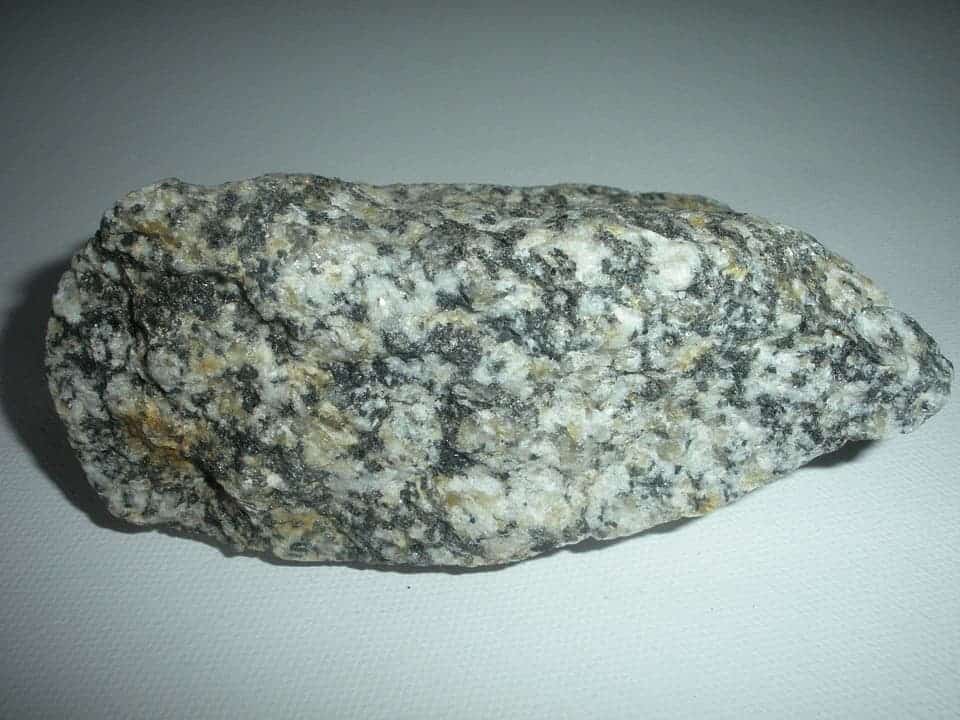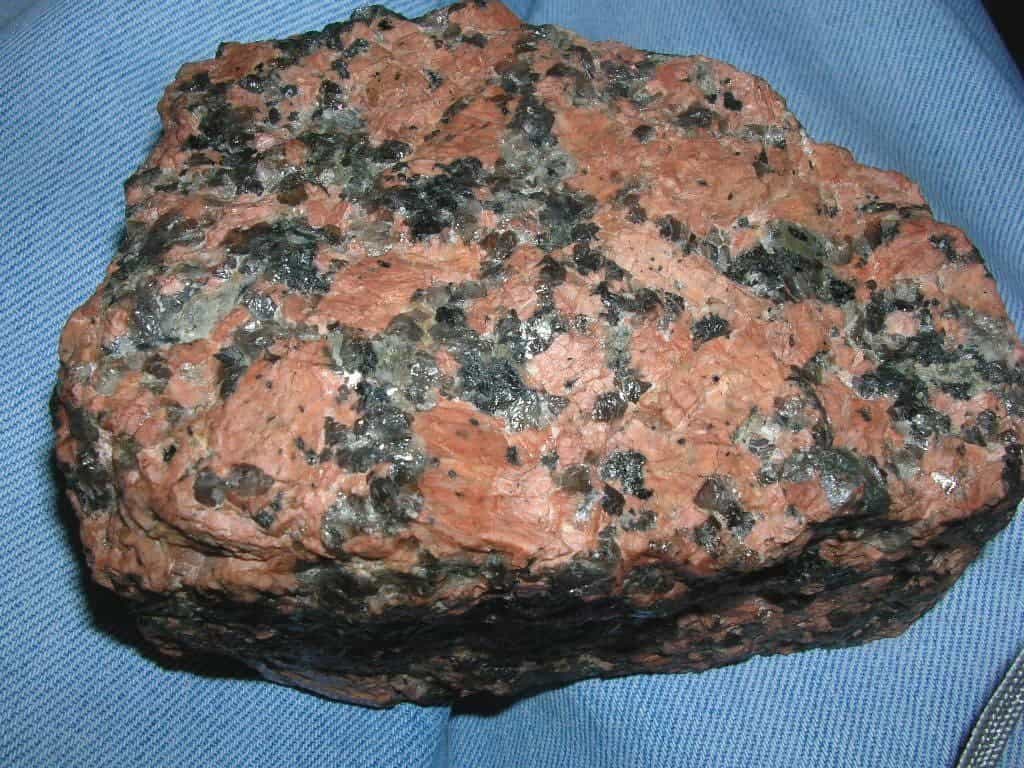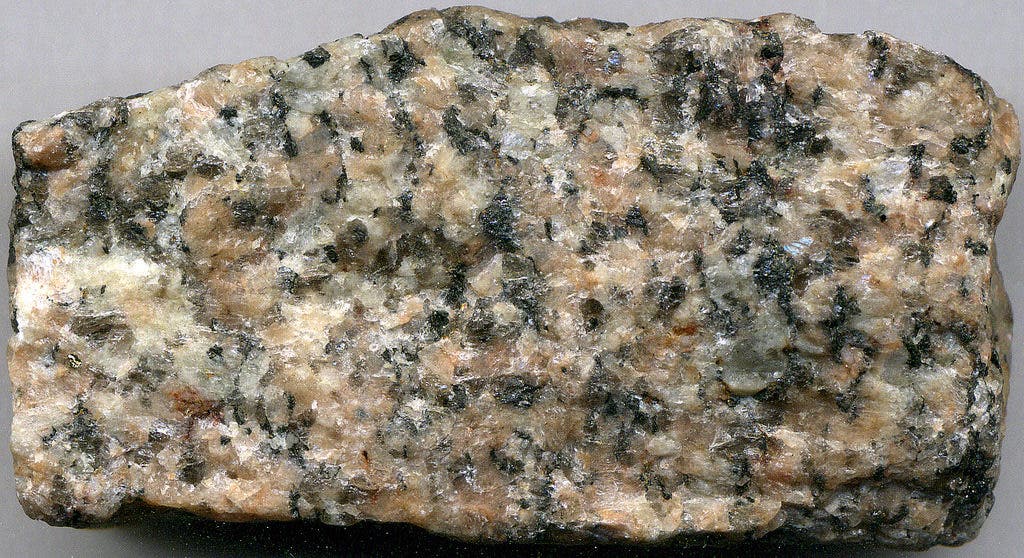
Granites are some of the most distinguishable rocks out there, and even amateur geologists usually have no problem in identifying them. But if you’re new to the rocky world of geology, identifying any rock can be a daunting task. Fret not, we’ve got you covered. Here’s what you need to know.
How granites form
Granites are igneous rocks, sometimes also called plutonic. This means that they’re not formed as a result of a volcanic eruption, but rather through the slow, gradual cooling of magma. They tend to have pretty big, coarse crystals (visible with the naked eye) — as a rule of thumb, the bigger the crystals, the slower the cooling. For instance, in other eruptive rocks which cooled extremely fast, you can’t see crystals with the naked eye, or there aren’t any crystals at all — because they’ve had no time to form. But with granites, named for their granular structure, you don’t have this problem — you just see the crystals with relative ease. No equipment is needed, though a loupe can help sometimes.

Since granites are a pretty diverse group, their chemistry can also be varied. They contain, above all, silicon dioxide, which can make up to 70% of their composition. They also contain alumina, (around the 14% mark), and to a lesser extent, sodium oxide, potassium oxide and iron oxide. Other chemical compounds typically account for less than 1%.
Minerals in a granite
Granites usually contain both “felsic” and “mafic” minerals. Those names might not mean much if you’re just interested in IDing simple rocks, but it helps to remember them for your geological forays, especially if you want to identify more rocks.

Basically, felsic minerals are white(ish) white mafic minerals are dark. A tool I used to use as a student is that “mafic” sounds a lot like “mafia,” which is bad, so it’s black. Felsic sounds a bit like “fair” (I know it doesn’t but whatever — it helps), so they’re a bit whiter.
Overall, granite is a felsic rock, with mafic minerals being secondary or accessory in nature. The two main minerals in a granite are quartz and feldspar — in an extreme case, you could have a granite comprising of just those two minerals, though that almost never happens.
So, the first two (quartz and feldspar) are felsic, they’re the white ones, while the other ones (generally amphiboles, pyroxenes, biotite) are black or very dark. You can also have accessory minerals such as tourmaline, beryl, topaz, zircons and apatite, but that really doesn’t help you with the identification. Let’s look at the minerals that do help you:
Quartz
Quartz is a very common mineral in the Earth’s crust and is almost always well represented in granites. According to the generally accepted definition, a granite must have at least 20% quartz.
Quartz is typically light-grey and kind of looks like an opaque window. If you look at the crystals closely, they should stand out from the surrounding rocks. Quartz is pretty sturdy and you can’t scratch it with your fingernail (unlike other minerals).
Feldspar
Feldspar is often the most abundant rock in a granite — this is why the rock looks white with dark spots, and not dark with white spots. There are two main types of feldspar: alkaline and plagioclase, with most feldspars being a mixture of the two. It doesn’t really help you to tell the two apart (unless you want to go much deeper into the mineralogy of granites), and in most cases, you can’t. However, identifying feldspar is key for identifying a granite.
Feldspar pops up pretty much everywhere in geology, in igneous to sedimentary rocks. It makes out some 40% of the Earth’s crust, and knowing how to recognize it is key for any geologist — amateur or professional. Feldspars are hard minerals, almost always white (sometimes with a pink hue), typically sporting a glassy luster. A big difference between feldspar and quartz, for example, is how it breaks. While quartz breaks irregularly, often in curvy shapes, breaks readily along flat faces, a property called cleavage. Feldspar tends to look quite blocky as a result, as opposed to other minerals whose individual crystals might stand out.
Amphiboles and pyroxenes
We’re taking these two as a group because of their many similarities. They’re both black, and if you could look at them closely, they look like prisms rising up. The main visual difference is that amphiboles are generally taller than pyroxenes, though this distinction is extremely hard to make for a non-specialist.
Chemically, amphiboles contain water while pyroxenes don’t but again, this doesn’t really concern basic identification. Look for black prisms which are a bit tall, not flat like…
Biotite
Biotite is black mica.
Amateur geologists often have a rough time distinguishing between biotite and other black minerals, but there are a few things which can help you. First of all, biotite is basically a series of planar sheets, unlike amphiboles and pyroxenes which are prisms. So biotite is flat, the others are tall. Because of its sheet-like structure, it often starts to split up at the ends, much like an old book (can be hard to see with a naked eye). Biotite is also easily scratched with a fingernail, that can be a good tell. Granites can also feature white mica (called muscovite), though that is much rarer than biotite
So biotite is flat, the others are tall. Because of its sheet-like structure, it often starts to split up at the ends, much like an old book (can be hard to see with a naked eye). Biotite is also easily scratched with a fingernail, that can be a good tell. Granites can also feature white mica (called muscovite), though that is much rarer than biotite
What makes a granite a granite
Overall, it’s not any one of these minerals that make a granite a granite, but rather the way they all fit together. The main takeaway is to look at:
– the structure and texture. After all, granite is named for its “granular” or phaneritic texture — you can see
– types of minerals: look for quartz (at least 20%) and feldspar, often with mafic minerals

Granites are some of the easiest rocks to identify, and it’s all a matter of training your eyes and mind, it shouldn’t take too long. Also, if you’re just starting, you might read in some places that many rocks look like granites, but aren’t really granites — they’re called granitoids. For now, you shouldn’t really bother with that and go with the ‘if it looks like a granite, it’s a granite’ approach.
So, now that you know how to recognize them…
Where to find granites
Granites are widely distributed across the continental crust. You can’t find them “everywhere”, but you can find them pretty much close to everywhere. There is no global distribution or map of granites, the best thing to do is simply Google “Granites near [location]” or contact your local geology museum or national survey organization (USGS or BGS, for instance). Still, there are some general pointers which might help.
Granite often occurs as relatively small, less than 100 km² stock masses. They’re often associated with mountain ranges, and remember they have no connection to volcanic eruptions. Granites can vary significantly in crystal size and weathering so don’t expect them all to look like stock photos.
The most important thing is to go exploring and make your own notes, and then compare then with the literature. Send us your photos and notes, and we’ll be sure to feature them!


